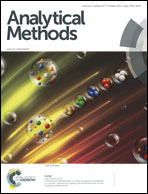Feasibility study on the use of attenuated total reflectance MIR spectroscopy to measure the fructan content in barley
Abstract
The aim of this study was to evaluate the feasibility of using attenuated total reflectance mid-infrared (ATR-MIR) spectroscopy to predict the fructan content in both barley and malt flour samples. Samples (n = 60) were sourced from commercial and experimental barley grain varieties and their corresponding malts. The fructan content in grain and malt flour was determined using the enzymatic kit from Megazyme (K-FRUC, Megazyme International Ireland). Samples were scanned in a MIR instrument using an ATR single bounce cell (Bruker Optics, Germany). The coefficients of determination in cross-validation (R2) and the standard error of cross-validation (SECV) obtained for the prediction of the fructan content in the calibration set were 0.76 and 0.20%, respectively. The residual predictive deviation (RPD = SD/SECV) value obtained was 2.3, indicating that these calibrations can be used for qualitative determination of the fructan content (e.g. low, medium and high) in the set of samples analysed. This study showed that ATR-MIR spectroscopy might be used as approximate estimates of the true fructan concentration in barley and malt in order to rank samples (low, medium, high) in the context of a breeding program.


 Please wait while we load your content...
Please wait while we load your content...